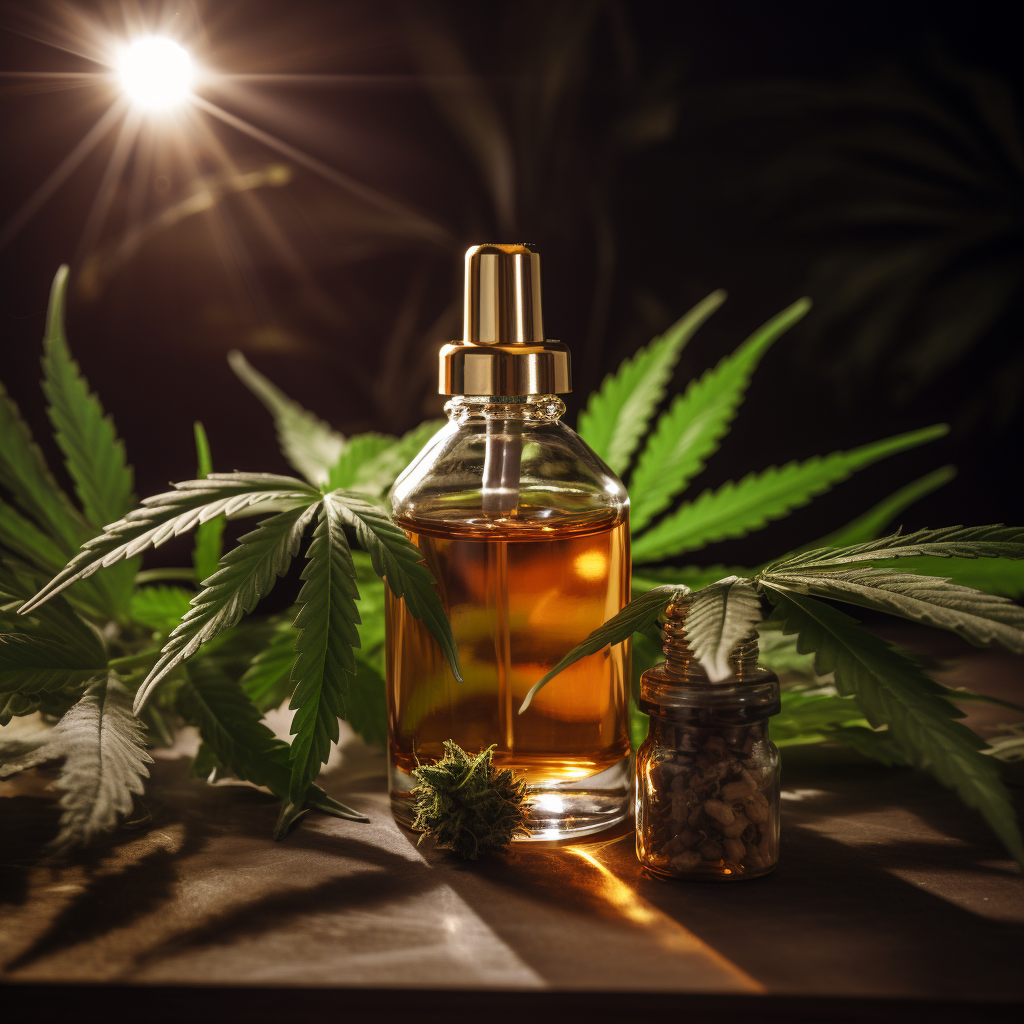
Exploring the Science: How Different Strains of Cannabis Affect the Body
19/08/2023
The Growing Trend of CBD: Myth vs. Reality
21/08/2023Cannabidiol (CBD) and tetrahydrocannabinol (THC) are two of the most prominent compounds found in cannabis plants, each with distinct properties and potential benefits. As the popularity of cannabis-derived products continues to rise, it’s crucial to comprehend the differences between these compounds to make informed decisions about their usage.
This article delves into the characteristics, effects, and potential advantages of CBD and THC, shedding light on their unique roles in the world of cannabis.
Exploring CBD: The Non-Psychoactive Wonder
CBD is a non-psychoactive cannabinoid that has gained considerable attention for its potential therapeutic benefits. Unlike THC, CBD does not induce the “high” commonly associated with cannabis consumption. It interacts with the body’s endocannabinoid system (ECS), a complex network of receptors that regulate various physiological functions, including pain perception, mood, appetite, and sleep.
Potential Benefits of CBD
Research suggests that CBD may offer a range of potential benefits. One of the most widely recognized applications is its ability to alleviate pain and inflammation. Studies have shown that CBD interacts with ECS receptors to modulate pain signals, making it a promising option for individuals dealing with chronic pain conditions.
CBD’s anxiolytic (anxiety-reducing) properties have also garnered attention. Many users report feeling calmer and more relaxed after consuming CBD products. This has led to its consideration as a potential tool for managing anxiety disorders, such as generalized anxiety disorder and social anxiety.
Furthermore, CBD is being investigated for its potential role in managing epilepsy and seizures. The U.S. Food and Drug Administration (FDA) has even approved a CBD-based medication, Epidiolex, for the treatment of rare forms of epilepsy.

Unlocking THC: The Psychoactive Compound
THC is the cannabinoid responsible for the euphoric “high” that is often associated with cannabis use. It binds to ECS receptors, particularly the CB1 receptors found in the brain and central nervous system, leading to altered perceptions and feelings of relaxation.
Exploring THC’s Potential
While THC’s psychoactive effects are well-known, it also offers potential benefits beyond its recreational use. Many medical marijuana patients turn to THC-rich strains to manage symptoms such as pain, nausea, and appetite loss. For example, individuals undergoing chemotherapy may find relief from treatment-related side effects through THC consumption.
THC’s impact on mood alteration can also have therapeutic applications. Some users report experiencing elevated mood, reduced stress, and increased creativity after consuming THC. However, it’s important to note that excessive THC consumption can lead to anxiety, paranoia, and impaired cognitive function in some individuals.
The Entourage Effect: Synergy in Action
CBD and THC are not the only compounds in cannabis; they are part of a complex matrix that includes other cannabinoids, terpenes, and flavonoids. The entourage effect refers to the phenomenon in which these compounds work together synergistically to enhance each other’s effects. For instance, CBD may modulate some of the intense psychoactive effects of THC, allowing for a more balanced experience.
Legality and Regulation
The legal status of CBD and THC varies widely across jurisdictions. In some places, CBD derived from hemp (a type of cannabis plant with low THC content) is legal and accessible without a prescription.
THC, on the other hand, is subject to stricter regulations due to its psychoactive nature. Medical marijuana programs in certain regions provide legal access to THC for patients with qualifying conditions.
Finding Balance: CBD-THC Ratios
CBD and THC can be consumed individually, but they are often used in combination to achieve specific effects. Different ratios of CBD to THC can yield varying results. For instance, a higher CBD-to-THC ratio might provide pain relief without inducing significant psychoactivity. Conversely, a higher THC-to-CBD ratio could be used for relaxation and mood elevation.
Conclusion: Navigating the Cannabis Landscape
CBD and THC represent two distinct avenues within the vast landscape of cannabis compounds. CBD offers potential therapeutic benefits without the psychoactive effects of THC, making it appealing to a broader audience. THC, with its psychoactive properties, holds promise for both recreational and medicinal use.
As research continues to uncover the complexities of CBD and THC and their interactions with the human body, individuals are presented with a growing array of options. Whether seeking relief from pain, anxiety, or other health conditions, understanding the differences and potential benefits of CBD and THC empowers consumers to make well-informed choices that align with their unique needs and preferences.

